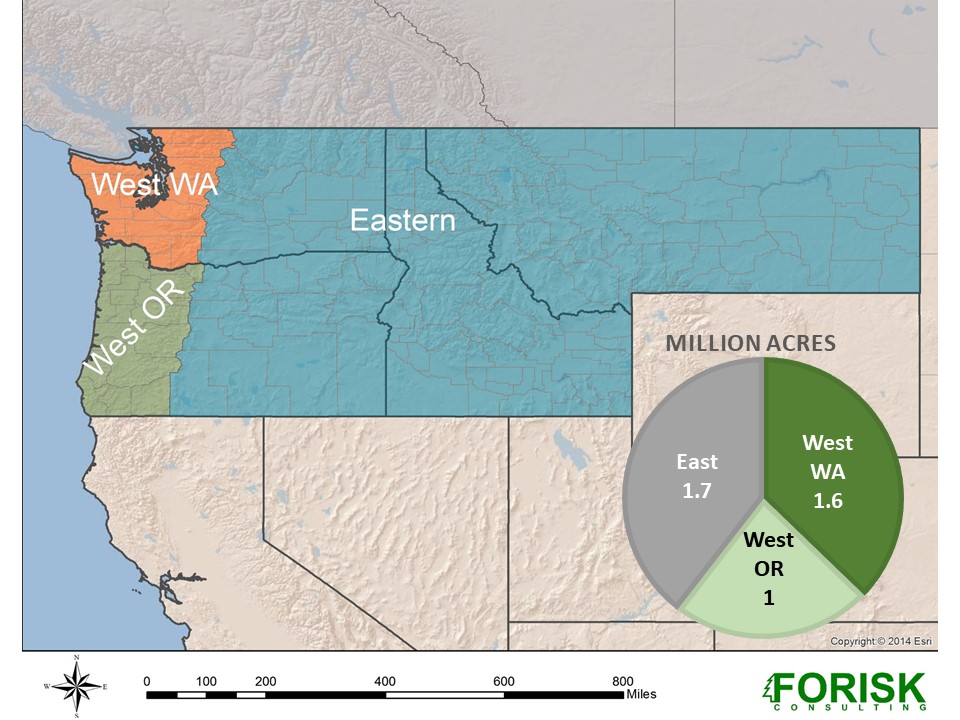The Western United States is a major supplier of raw materials for the forest industry, producing over 40% of U.S. softwood lumber. Despite the abundance of federal land in the area, nearly 80% of the harvested volumes from Oregon and Washington are from privately-owned lands. Forest management practices on private timberland in the West enable the forest industry to remain highly competitive. A richer understanding of the diversity and intensity of silvicultural activities in the region is useful for benchmarking best practices, and understanding the investments necessary to intensively manage western timberlands. In the spring of 2017, Forisk performed our first survey of private timberland owners and managers in Idaho, Montana, Oregon, and Washington to gather this level of detail.

We collected data on 4.3 million acres of privately-owned forestland from 15 participating firms. TIMOs represented the largest proportion of managed lands (45%), followed by forest industry and REITs (38%), and independent private owners (17%). Douglas-fir is the predominant species planted west of the Cascades, while a mixture of other species including pines, larch, and fir were prevalent east of the Cascades. Chemical applications were the most common site prep method (81% of planted acres). Chemical treatments for site prep, herbaceous control, and woody competition control were less common in western Washington than the other two sub-regions. Only 40% of respondents applied fertilizer, and only on 0.5% of lands under management in 2016 (none east of the Cascades).

Precommercial thinning was reported by 93% of firms (1% of acres under management), and was performed at an average stand age of 15. Commercial thinning was less common. It was reported by 73% of respondents and was performed at an average age of 29 west of the Cascades and 33 east of the Cascades. Average final harvest age was between 50 and 52 years west of the Cascades and 72 years east of the Cascades. Respondents predicted that final harvest age of newly replanted stands would be much lower than the current harvest, with rotation lengths predicted to drop 7-8 years west of the Cascades and 25 years east of the Cascades. This was the clearest indication that silvicultural intensity was expected to yield measurable positive results in the future.
A full copy of the results including overhead costs and detailed silvicultural treatments and costs by sub-region is available for purchase here.

Leave a Reply